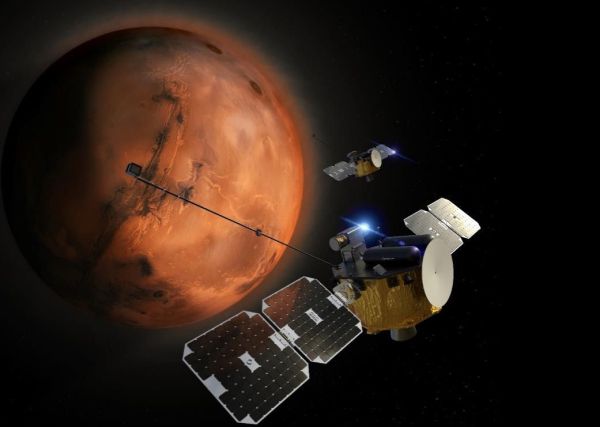
WASHINGTON — As NASA’s planetary science programs face reduced budgets this year and uncertain prospects for next year, advocates in Congress are banding together to build up support for them.
Reps. Judy Chu (D-Calif.) and Don Bacon (R-Neb.) announced March 6 that they were restarting a Planetary Science Caucus in Congress, serving as its co-chairs, with more than a dozen other members. The goal of the caucus is to educate other members and the public on the benefits of space exploration, in particular planetary science missions and related research, including studies of exoplanets and the search for life.
“We are launching this caucus at a critical moment for the future of American planetary science,” Chu said at a March 5 event organized by The Planetary Society about the caucus, noting the cuts in NASA’s Mars Sample Return (MSR) program proposed by Senate appropriators in their fiscal year 2024 spending bill. That started a chain of events that led to NASA’s Jet Propulsion Laboratory, in Chu’s district, laying off 8% of its workforce in February.
A final 2024 spending bill, expected to be approved by the House and Senate by March 8, gives NASA some flexibility in determining funding for MSR between the Senate bill’s $300 million and the House version’s $949.3 million, also the amount NASA requested, pending the results of an ongoing reassessment of MSR’s architecture.
“I am so thankful that we made tremendous progress in the bipartisan, bicameral appropriations legislation,” Chu said, citing provisions that reiterated the importance of MSR as a top priority in planetary science decadal surveys, as well as prohibiting NASA from laying off other people working on MSR without congressional notification.
“However, the fight isn’t over, and we must work together to fund Mars Sample Return at the necessary level to rehire workers and promote the kind of discoveries that JPL has been on the frontline for decades,” she said. “So that’s one big reason why it’s so important to relaunch the Planetary Science Caucus.”
Bacon, in a statement, offered a more general endorsement of space exploration as a reason for starting the caucus. “As the future continues to unfold before us, we owe a duty to our children, our grandchildren and their descendants to drive our innovation by prioritizing exploration,” he said. “There is no greater exploration than the final frontier.”
The restart of the caucus, which had been idle in the previous congress, comes as NASA grapples not just with the uncertain future of MSR but also cuts in its overall planetary science program. The 2024 spending bill provides $2.717 billion for planetary science, nearly half a billion dollars less than what NASA received in 2023. The agency had requested more than $3.38 billion for planetary science in its 2024 proposal.
“The best case that we had is that we’d hold flat” at 2023 levels, said Lori Glaze, director of NASA’s planetary science division, at a March 4 meeting of the Planetary Science Advisory Committee. “This is going to be a challenge.” She suggested later in the meeting that it meant NASA was unlikely to be able to fund MSR above the $300 million minimum in the appropriations bill.
She said it was too soon to see how the reduced spending would affect programs other than MSR. Once the bill is enacted, NASA will start work on an operating plan that will outline how it plans to allocate funding beyond the direction given in the bill, which will then require both White House and congressional approval. She said she hoped that plan would be complete by July.
The budget pressure is unlikely to let up in fiscal year 2025, the second year of a two-year agreement on the debt ceiling approved in June 2023 that caps non-defense discretionary spending. The administration’s 2025 budget proposal is slated for release March 11.
“The repercussions of tight budgets are real and we are already starting to feel the effects,” Glaze said. She said she is prioritizing missions in later phases of development, having passed their confirmation reviews, as well as research funding.
“We’re trying to honor the commitments that we have to the best of our ability,” she said. “In some cases we may need to put some delays in the system here for some of the things we already have in work.”
Jeff Foust writes about space policy, commercial space, and related topics for SpaceNews.
He earned a Ph.D. in planetary sciences from the Massachusetts Institute of Technology and a bachelor’s degree with honors in geophysics and planetary science…
More by Jeff Foust
Note: This article have been indexed to our site. We do not claim legitimacy, ownership or copyright of any of the content above. To see the article at original source Click Here














